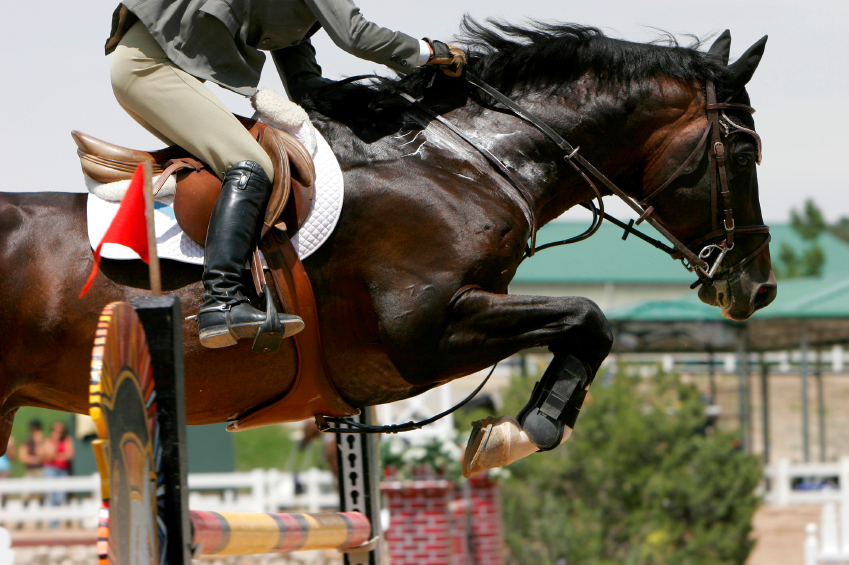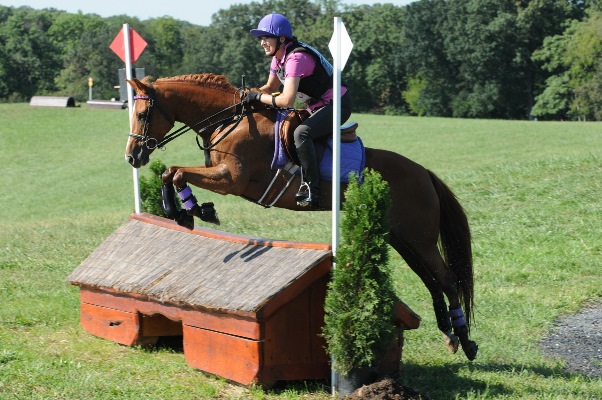 Every day, both the human and veterinary medical fields are striving to work towards practicing the most innovative forms of care. These alternative therapies range from cold laser and magna wave to massage therapy and chiropractics. Currently, a strongly emerging field in the equine veterinary industry is the practice of chiropractics. It acts to improve the overall health of the horse by restoring the spinal column’s normal movement and alignment. The thought is that when something is affected higher up in the vertebral column, it can present as lower limb lameness or gait abnormality.
Every day, both the human and veterinary medical fields are striving to work towards practicing the most innovative forms of care. These alternative therapies range from cold laser and magna wave to massage therapy and chiropractics. Currently, a strongly emerging field in the equine veterinary industry is the practice of chiropractics. It acts to improve the overall health of the horse by restoring the spinal column’s normal movement and alignment. The thought is that when something is affected higher up in the vertebral column, it can present as lower limb lameness or gait abnormality.
Chiropractic care can be clinically applied in horses that present to a veterinarian for poor performance or just a vague lameness. There may be no directly sensitive regions of pain, or any changes seen on radiographs. When a horse is misaligned or in need of a chiropractic adjustment, this can also affect his or her range of motion, flexibility, posture, attitude, ability to collect, and/or show sensitivity to saddles or grooming. These are just a few of the multitude of signs that can indicate a problem. Chiropractic care can also be used for general maintenance and up keep in performance horses. This care is also considered when there is a recurring lameness or musculoskeletal issue, and other forms of therapy have not been helpful.
 Today, both equine veterinarians and human chiropractors are becoming certified in equine chiropractics. Like any examination, a chiropractic examination should consist of a detailed history and physical exam. The practitioner performing the care may conduct a lameness and/or neurologic examination. The core of the examination includes evaluating range of motion of all of the joints. The horse’s posture, gait, and anatomy should all be evaluated, along with any signs of muscle wasting or atrophy. It is strongly noted that chiropractic care is not to replace any traditional veterinary care. Contact your veterinarian today to find a licensed equine chiropractor in your area.
Today, both equine veterinarians and human chiropractors are becoming certified in equine chiropractics. Like any examination, a chiropractic examination should consist of a detailed history and physical exam. The practitioner performing the care may conduct a lameness and/or neurologic examination. The core of the examination includes evaluating range of motion of all of the joints. The horse’s posture, gait, and anatomy should all be evaluated, along with any signs of muscle wasting or atrophy. It is strongly noted that chiropractic care is not to replace any traditional veterinary care. Contact your veterinarian today to find a licensed equine chiropractor in your area.
Below I have provided a brief case study to illustrate the benefits of chiropractics in the overall health of horses.
Signalment: Patient is an approximately 15-year-old quarter horse used for cattle work and break away roping. He has never had any history of lameness, nor has he ever been treated with any intra articular injections.
History: Patient has been noticeably slower to come up in the evening for grain. When being ridden, he has seemed unwilling to move forward into a trot or lope. The farrier has also noted him seeming a bit ‘sticky’ in the hind end when working with him.
Lameness Exam: Baseline 2/5 lame left hind, 1/5 right hind. Mild effusion palpated bilaterally on both stifles, right more than left. Flexion tests on the hind limbs were negative and patient had good range of motion. Radiographs revealed a small OCD lesion in the right hock which was determined to be an incidental finding.
Treatment: Based on findings, all options were discussed from rest with NSAIDS to intra articular injections. The owner wanted to begin as non invasively as possible and leave intraarticular injections as our last resort. We both discussed and agreed on alternative therapies like magna wave therapy and chiropractic care.
The hind end was adjusted and treated accordingly with the horse being
 strongly reactive in the sacroiliac or SI region, stifles and hocks. With these findings, the owner opted to try injections as well. She wanted to try one set of injections at a time and it was decided that the sacroiliac joints would be first. They were injected bilaterally and with ultrasound guidance.
strongly reactive in the sacroiliac or SI region, stifles and hocks. With these findings, the owner opted to try injections as well. She wanted to try one set of injections at a time and it was decided that the sacroiliac joints would be first. They were injected bilaterally and with ultrasound guidance.
Result: After 2 weeks of rest, the patient was put back into light work. He was doing so well, that she recently has returned him to normal work. He is very quick and smooth with his transitions and she is very pleased with his performance. She will continue with magna wave and chiropractic adjustments 2-3 times a year or as needed.
_____________________________________________________________________________________________
About the author: Dr. Jessica Quigg is a graduate of Ross University School of Veterinary Medicine. She was born and raised in rural Pennsylvania and grew up showing Appaloosas. Her interests include equine reproduction and internal medicine. She is also certified in equine and canine massage therapy through Equissage Inc. She completed a one-year internship at Montana Equine Medical and Surgical Center, Three Forks, MT. Dr. Quigg is now an associate equine veterinarian at Oklahoma City Equine Clinic (An SBS Affiliate Laboratory) in Oklahoma City, OK.


Log in to join the conversation.